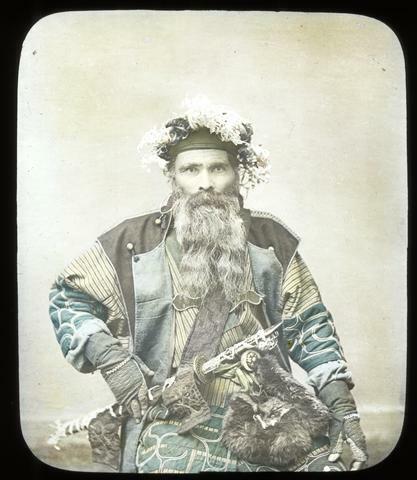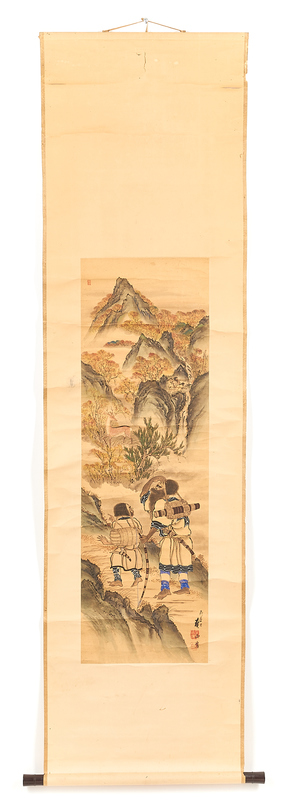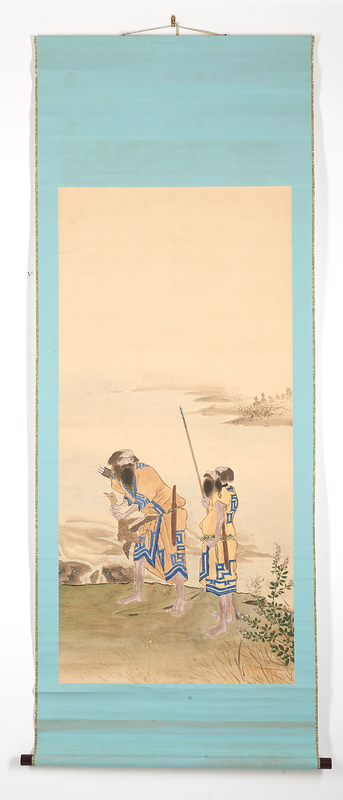Ainu Lifeways
Hokkaido Ainu communities held strong connections with their surrounding environment, living off the land by collecting seasonal plants and berries and hunting for game from the island’s abundant forests. Hunting was a particularly important part of Ainu life, and is a common subject in many Ainu-e works. Mountain game traditionally made up a significant part of the diet, especially in the winter when salmon and vegetables were scarce. Trapping animals for furs and skins was also important, as these goods could be exchanged for valuable Japanese and Chinese trade commodities.1 Most hunting was done with bows and arrows, and many hunters would tip their arrows with poison made from the wolfsbane plant in order to bring down large game like deer and bears.2 Such arrows can be seen in the two paintings below. In addition to bows and arrows, Ainu hunters also carried makiri knives and Japanese short swords. Usually only used in ceremonies and rituals, these swords (emusi/emushi) were particularly prized in Ainu society, and unlike in Japan where they were worn at the side, Ainu men typically carried them on their backs, held in place by custom-made straps woven with intricate designs called emusi-at.3 These swords and woven emusi-at can be seen clearly in the painting on the left, entitled Ainu Hunters in Landscape, painted by Hirasawa Byōzan (1822-1876).
Byōzan is perhaps the best-known of all Ainu-e painters, and after moving to Hokkaido from Hanamaki, Iwate Prefecture, he spent time living with Ainu communities in present-day Tokachi and Erimo, making sketches and painting scenes from festivals, ceremonies, and daily life.4 Byōzan was such a prominent Ainu-e artist that his paintings were commissioned and acquired by prominent Japanese businessmen and foreign merchants alike.5 Byōzan even influenced many other Ainu-e painters, like his pupil Kimura Hakō whose works can also be found in the JSMA collection (see Ainu Ceremony in Landscape, XSCL12).6
1.) Hitoshi Watanabe, “The Ainu Ecosystem,” in Ainu: Spirit of a Northern People, 200.
2.) Hans Dieter Ölschliger, “Technology, Settlement, and Hunting Ritual” in Ainu: Spirit of a Northern People, 212.
3.) Chisato Dubreuil “Ainu Art: The Beginnings of Tradition,” Ainu: Spirit of a Northern People, 296.
4.) Hakodate City Museum 市立函館博物館, Hirasawa Byōzan to sono jidai 平沢屏山とその時代 [Hirasawa Byōzan and His Time], (Hakodate, Japan: Hakodate City Museum, 2022): 5.
5.) Ibid., 19.
6.) Ibid., 37.


